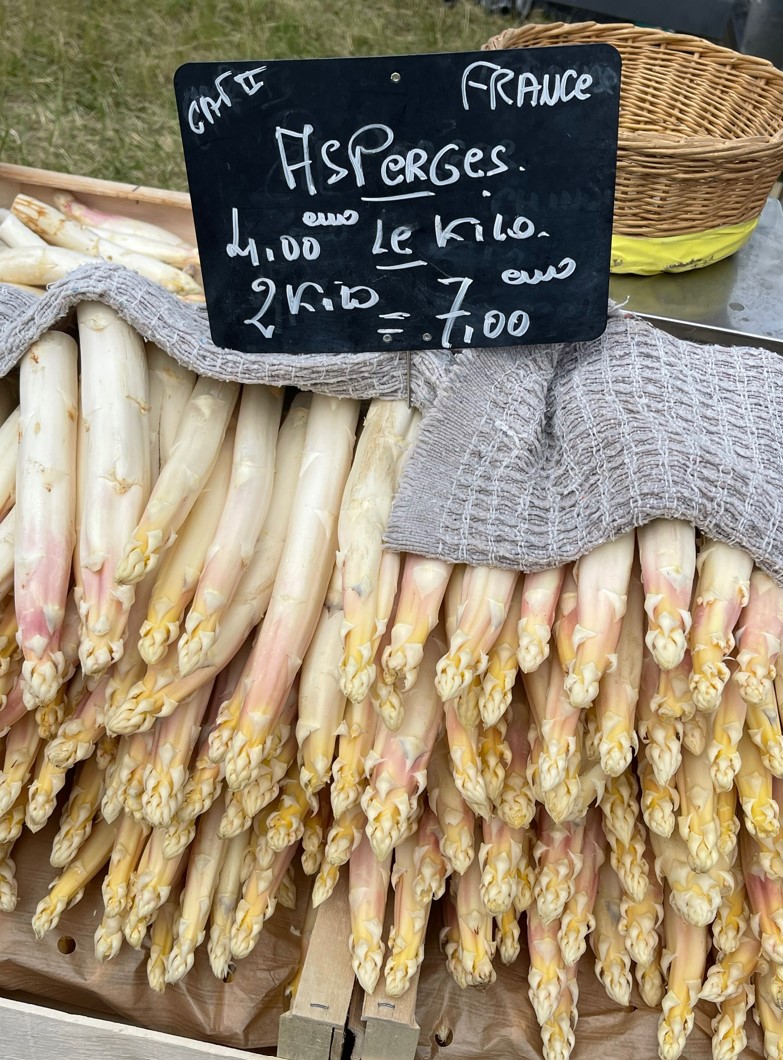I had my first taste of white asparagus during a springtime visit to Paris many years ago. By early April, it’s featured on menus everywhere in France. Since I love green asparagus, I couldn’t resist giving it a shot—and I’m so glad I did!
What makes white asparagus so special?
For starters, it has a milder, slightly sweeter flavor than green asparagus. It’s more delicate and less bitter, which makes it a real treat. The texture is also incredibly tender and silky, cooking up to a soft, creamy consistency. And with such a short growing season, it’s considered a bit of a delicacy, making it even more enjoyable when it’s in season.

Like green asparagus, it can be prepared in various ways, such as steaming, boiling, or roasting, enhancing its flavor and tenderness. Steamed is my preferred cooking method. White asparagus has a tougher, bitter skin compared to green asparagus, so use a vegetable peeler to remove the outer layer, starting from just below the tips down to the base. Be sure to peel all the way down to where the stalk becomes tender and snap or cut off the woody ends at the bottom of the stalks.
Then, try a simple recipe such as asperges à la vinaigrette (steamed and served cold with a vinaigrette dressing)—this is my favorite option for both white and green asparagus, and I shared my recipe below. Other very delicious and richer options include asperges au gratin (baked with cheese and breadcrumbs), asperges à la creme (served in a creamy sauce, such as Hollandaise), and asperges en veloute (soup, often pureed and served hot or cold).
White asparagus adds a touch of elegance and sophistication to any table. Whether paired with a velvety sauce or simple vinaigrette, served as an appetizer or side dish, it is so easy to make and elevates the dining experience, offering a sense of indulgence and seasonal finesse. I encourage you to try it!
Simple Vinaigrette ingredients:
- 3 tablespoons olive oil
- 1 tablespoon red wine vinegar
- 1 teaspoon Dijon mustard
- 1 teaspoon chopped or dry basil
- Salt and pepper to taste
Process:
- In a small bowl, whisk together the vinegar, mustard (if using), basil, salt, and pepper.
- Slowly drizzle in the olive oil while whisking constantly until the vinaigrette is emulsified (the oil and vinegar combine).
- Taste and adjust seasoning if necessary, adding more salt, pepper, or vinegar to your liking.
Bon appétit! Enjoy your asparagus adventure!



Pretty looking, tender and tasty. Good addition when u can find them.
Sounds absolutely delicious!